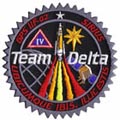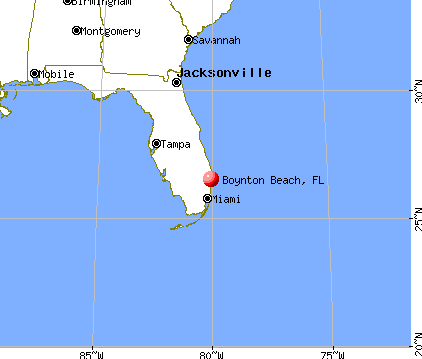The United Launch Alliance Delta 4 rocket will launch the GPS IIF-2 satellite into orbit. The second of the new II-F series of satellites for the US Air Force's Global Positioning System, it will occupy the Plane D, Slot 2A location of the navigation network, which is divided into six orbital groupings with multiple satellites flying in each. The craft will take over the position held by the GPS 2A-11 satellite, which was launched by a Delta 2 rocket from Cape Canaveral on July 3, 1991.
Remarkably, that aging bird continues to function despite the loss of some redundant systems and far outlasting its design life. It will be relocated within the same orbital plane as a reinforcement while living out its remaining usefulness.
This launch has already been postponed from July 15 due to stormy weather that prevented the retraction of the mobile service gantry.
 |
|
{colsp=2}
|

This launch is the first launch of a new GPS satellite in 14 months, a period that hasn't be smooth for the GPS system. Quite a few satellites in the system has been active for almost twenty years, leading to the US GAO issuing a warning about the reliability of the system decreasing due to delays in the next-generation satellites some time ago. Therefore this launch will be quite important for military and civilian users! The new breed of satellite that features improved accuracy, enhanced internal atomic clocks, better anti-jam resistance, a civil signal for commercial aviation, a longer design life and reprogrammable onboard processors to evolve with future needs.
There is O-F Calendar event created for this launch. And here you can request a reminder for it.
Viewing the Launch Live:
Mission Description:
Launch Vehicle:
 |
|
{colsp=2}
Links:
Launch Updates:
Remarkably, that aging bird continues to function despite the loss of some redundant systems and far outlasting its design life. It will be relocated within the same orbital plane as a reinforcement while living out its remaining usefulness.
This launch has already been postponed from July 15 due to stormy weather that prevented the retraction of the mobile service gantry.
 |
|
Launch date:
|
July 16, 2011
Window open:
|
06:41 UTC / 2:41 a.m. EST
Window close:
|
07:00 UTC / 3:00 a.m. EST
Launch site:
|
SLC-37B, CCAFS, Florida
{colsp=2}
[highlight]L[eventtimer]2011-7-16 6:41:30;%c%%ddd%/%hh%:%mm%:%ss%[/eventtimer][/highlight]

This launch is the first launch of a new GPS satellite in 14 months, a period that hasn't be smooth for the GPS system. Quite a few satellites in the system has been active for almost twenty years, leading to the US GAO issuing a warning about the reliability of the system decreasing due to delays in the next-generation satellites some time ago. Therefore this launch will be quite important for military and civilian users! The new breed of satellite that features improved accuracy, enhanced internal atomic clocks, better anti-jam resistance, a civil signal for commercial aviation, a longer design life and reprogrammable onboard processors to evolve with future needs.
There is O-F Calendar event created for this launch. And here you can request a reminder for it.
Viewing the Launch Live:
A live simulcast of the TV broadcast will be available at 2:24 a.m. EST / 06:24 UTC on launch day on the ULA Web site.
The broadcast [eventtimer]2011-7-16 06:24?will start in|started;%c% %h% hours, %m%[/eventtimer] minutes[eventtimer]2011-7-16 06:24?.| ago.;%c%[/eventtimer]
The broadcast [eventtimer]2011-7-16 06:24?will start in|started;%c% %h% hours, %m%[/eventtimer] minutes[eventtimer]2011-7-16 06:24?.| ago.;%c%[/eventtimer]
Mission Description:
This launch supports the United States Air Force's Global Positioning System (GPS), which is also available to civilian users. The new satellite will occupy the Plane D, Slot 2A location of the navigation network, replacing the GPS-2A-11 satellite in that slot. The old satellite (launched July 1991!) will be moved to a different slot for continued service.
Launch Vehicle:

The Delta IV Medium + (4,2) model is comprised of a common booster core (CBC), two additional GEM-60 solid rocket boosters (SRB) to augment the first-stage CBC, a cryogenic upper stage, and 4-m-diameter payload fairing (PLF).
The Delta 4 CBC design is optimized for balanced performance over a wide range of payloads using the high-performance RS-68 main engine powered by liquid hydrogen (LH2) and liquid oxygen (LO2). The RS-68 is throttleable to serve various mission profiles operating at 102% and 58% thrust level. Two separate 5-m-dia. LO2 and LH2 tanks provide the majority of the first stage structure. These two tanks are integrated wih a composite cylinder, called the centerbody. At the forward end of the CBC, another composite cylinder, the interstage, provides the interface between the CBC and the cryogenic second stage.
At the aft end of the CBC, an engine section provides the thrust structure and thermal shield that integrates the RS-68 main engine to the CBC. The RS-68 requirements were balanced to enable operational thrust at lower chamber pressures. This design trade increase engine reliability, while reducing complexity. Compared with the SSME, the RS-68 has an 80% reduction in unique part count. Even with lower performance than comparable LO2/LH2 engines, the RS-68 develops a world record 2949 kN (663000 lb) of sea-level thrust with a specific impulse (Isp) of 359 seconds at sea level.
The second stage comprises a 4-m-diameter fuel tank, a composite intertank structure, a liquid oxygen tank, avionics equipment shelf, avionics suite, attitude control system and is powered by a Pratt & Whitney RL10B-2 liquid rocket engine that produces 100kN (24750 lb.) of thrust. The RL10B-2, with its high expansion, carbon-carbon nozzle provides an Isp of 465.5 seconds.
{colsp=2}
Links:
- United Launch Alliance: GPS IIF-2 page
- Spaceflight Now: Next GPS satellite moves to Cape Canaveral launch pad
- Spaceflight Now: Photo Gallery: Delta 4 rocket awaits launch
Launch Updates:
- Spaceflight Now's Mission Status Center
- United Launch Alliance Twitter
- ULA launch hotline - dial at: 1-877-852-4321















